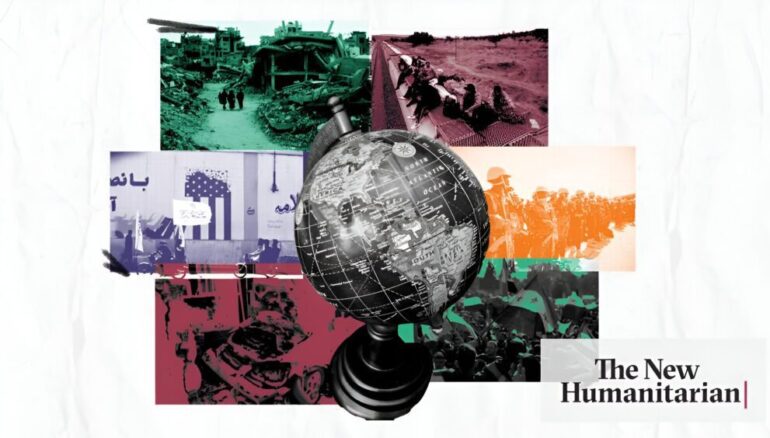As we navigate through 2025, the world is grappling with some of the most severe humanitarian crises in recent history. These crises, fueled by conflict, climate change, economic instability, and political fragility, are affecting millions of people worldwide. The 2025 Global Humanitarian Overview (GHO) highlights that over 305 million people will require urgent humanitarian assistance, with 190 million facing life-threatening needs3. This blog provides an in-depth analysis of the top humanitarian crises in 2025 and explores the way forward for addressing these challenges.
Overview of the Crises
1. Sudan

Sudan is facing one of the most dire humanitarian situations globally. Following a coup in 2021, the country plunged into violence, displacing millions and leaving over 30.4 million people in need of humanitarian aid1. The conflict has disrupted essential services, exacerbating the crisis. The UN estimates that over 63% of the population will require humanitarian assistance in 2025, with a funding requirement of $10.28 billion1.
2. Syria
Syria has been embroiled in conflict for over a decade, resulting in one of the largest refugee crises worldwide. In 2025, an estimated 16.7 million Syrians require humanitarian assistance, with over 17 million displaced1. The ongoing instability has left huge swaths of infrastructure destroyed, and roughly 90% of Syrians live below the poverty line1. The UN has budgeted $8.58 billion for its 2025 response1.
3. Democratic Republic of the Congo
Increased violence has added to a decades-long humanitarian crisis in the DRC. The UN estimates that 21.2 million people will require humanitarian assistance in 2025, with a response that will require over $3.23 billion in funding1. The crisis is further complicated by land disputes, ethnic tensions, and natural resource conflicts.
4. Afghanistan
Afghanistan is facing a severe humanitarian crisis due to ongoing conflict and economic instability. In 2025, 22.9 million Afghans will require humanitarian assistance, with an additional 7.3 million displaced abroad1. The situation is exacerbated by climate-induced shocks and a collapsing healthcare system.
5. Yemen
The Yemeni Civil War has left nearly 80% of the population in need of assistance. In 2025, 19.5 million people require humanitarian aid, with a funding requirement of $2.5 billion1. The conflict has severely damaged food systems, infrastructure, and the economy.
6. Ethiopia

Ethiopia faces overlapping humanitarian emergencies due to conflict, climate change, and economic issues. At least 10 million Ethiopians will require humanitarian assistance in 2025, for which the UN has requested $2 billion1. The crisis is further complicated by disease outbreaks and hunger.
7. South Sudan
The protracted conflict and severe flooding have compounded humanitarian needs in South Sudan. In 2025, 9.3 million people will require assistance, with a funding requirement of $2.56 billion1. The situation is exacerbated by insecurity, violence, and displacement.
8. Chad
Chad is experiencing a growing humanitarian crisis due to conflict in neighboring countries and climate change. Over 7.8 million people need aid, with a funding requirement of $1.5 billion1. The crisis is further complicated by the influx of refugees from Sudan.
9. Ukraine
The ongoing conflict in Ukraine has resulted in significant displacement and humanitarian needs. Millions of Ukrainians require assistance, with the situation exacerbated by economic instability and infrastructure damage.
10. Gaza and the Occupied Palestinian Territories
The occupied Palestinian territory is experiencing catastrophic food insecurity, with the risk of famine looming. The ongoing conflict and economic blockade have severely impacted the livelihoods of Palestinians, leaving millions in need of humanitarian aid1.
The Way Forward
Addressing these humanitarian crises requires a multifaceted approach:
- Increased Funding: The gap between humanitarian needs and funding is growing. It is crucial to increase funding, expand the donor base, and work more efficiently to meet the needs of affected populations3.
- Strengthening International Humanitarian Law: Ensuring respect for International Humanitarian Law (IHL) is essential to protect civilians and deliver life-saving assistance in conflict zones2.
- Conflict Resolution: Efforts to resolve ongoing conflicts are critical to reducing humanitarian needs. Diplomatic efforts and peace negotiations must be supported globally2.
- Climate Change Mitigation: Addressing climate change is vital to reducing the frequency and severity of climate-induced disasters. Investing in climate resilience and adaptation measures can help mitigate these crises3.
- Community Engagement: Engaging local communities in humanitarian response efforts can enhance the effectiveness and sustainability of aid programs. This includes empowering women and marginalized groups1.
- Innovation and Technology: Leveraging technology and innovation can improve the efficiency and reach of humanitarian aid. This includes using data analytics, digital cash transfers, and remote health services7.
- Multilateral Cooperation: Strengthening global partnerships and multilateral cooperation is crucial for addressing the scale and complexity of humanitarian crises. This involves working closely with the UN, NGOs, and governments to ensure a coordinated response7.
In conclusion, addressing the humanitarian crises of 2025 requires a concerted effort from governments, international organizations, and civil society.
By working together to increase funding, strengthen legal protections, resolve conflicts, mitigate climate change, engage communities, leverage technology, and enhance multilateral cooperation, we can build a more resilient and equitable world for all.

